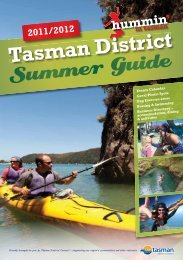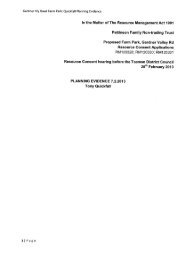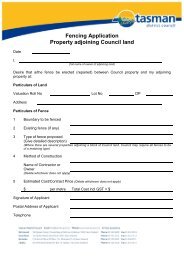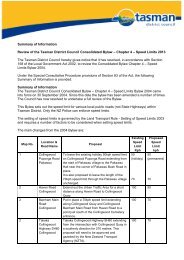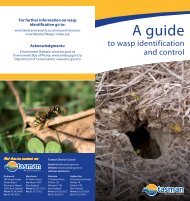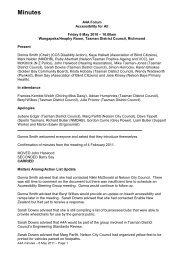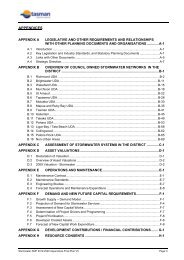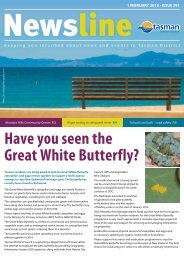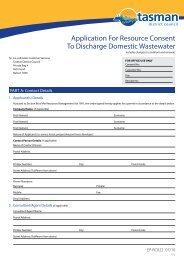Landscape Guide - Takaka Hill - Tasman District Council
Landscape Guide - Takaka Hill - Tasman District Council
Landscape Guide - Takaka Hill - Tasman District Council
Create successful ePaper yourself
Turn your PDF publications into a flip-book with our unique Google optimized e-Paper software.
5.8 Amenity Planting<br />
The planting around buildings requires a simple „broadbrush‟<br />
approach suitable to a rural location rather than the more ornamental<br />
styles found in urban settings.<br />
Large groups of one or two species should be used. Choose species<br />
that reflect the surrounding countryside.<br />
Avoid coloured cultivars such as golden totara, yellow cypress and<br />
deciduous species with bright autumn colour, as these types will<br />
stand out in the predominantly green/brown landscape of the <strong>Takaka</strong><br />
<strong>Hill</strong>.<br />
Avoid an urban planting scheme.<br />
Use species that reflect the<br />
surrounding countryside<br />
5.9 Weed Control<br />
As weed control is expensive and labour intensive, effective<br />
management of weeds in an area should focus on the prevention of<br />
weeds becoming established. The co-operation of all residents is<br />
needed to remove all known and potential weeds wherever they are<br />
found, and to make sure that none are deliberately introduced.<br />
<strong>Tasman</strong> <strong>District</strong> <strong>Council</strong>'s Regional Pest Management Strategy 2007,<br />
identifies plants and pests problematical to this area. This booklet<br />
and further information is available from the <strong>Council</strong>. Species<br />
identified as being problematical include Pampas Grass, Buddleia,<br />
Old Man‟s Beard, Passion Vine, Madeira Vine, Cotoneaster and<br />
Wild Ginger.<br />
Avoid plantings that create silhouettes<br />
Shape of woodlots to reflect<br />
existing contours<br />
5.10 Plantations<br />
The <strong>Takaka</strong> <strong>Hill</strong> landscape is vulnerable to change. Plantation forestry<br />
can have a dramatic impact on a landscape. Some general guidelines to<br />
follow are:<br />
Selection of Species<br />
Species grown in prominent locations should be evergreen conifer<br />
species. Trees with prominent spring or autumn colour should be<br />
avoided.<br />
Note: Douglas Fir should be discouraged from being grown<br />
adjacent to national parks due to its ability to invade the indigenous<br />
forests.<br />
Shaping<br />
The shape of woodlots should reflect existing landforms and avoid<br />
the imposition of arbitrary geometric shapes onto slopes.<br />
Avoid planting that silhouettes single specimens or edges of<br />
plantations against the skyline.<br />
Plant trees along the contour line rather than in straight lines running<br />
vertically up and down the slopes.<br />
Where possible locate new plantations adjacent to existing ones to<br />
avoid a fragmented pattern developing in the landscape.<br />
6



